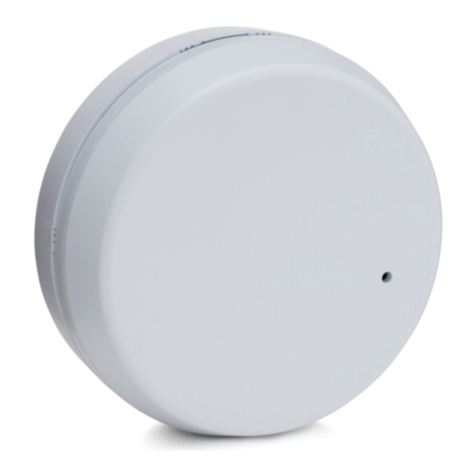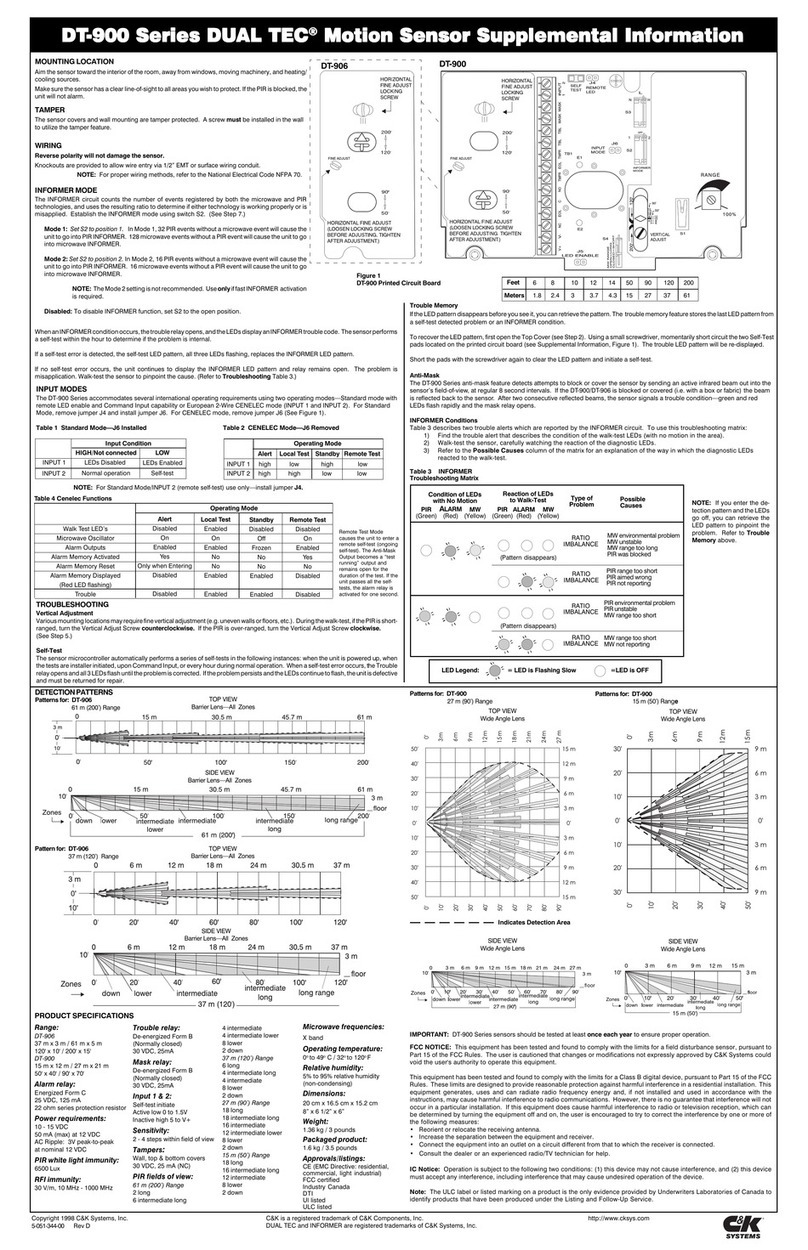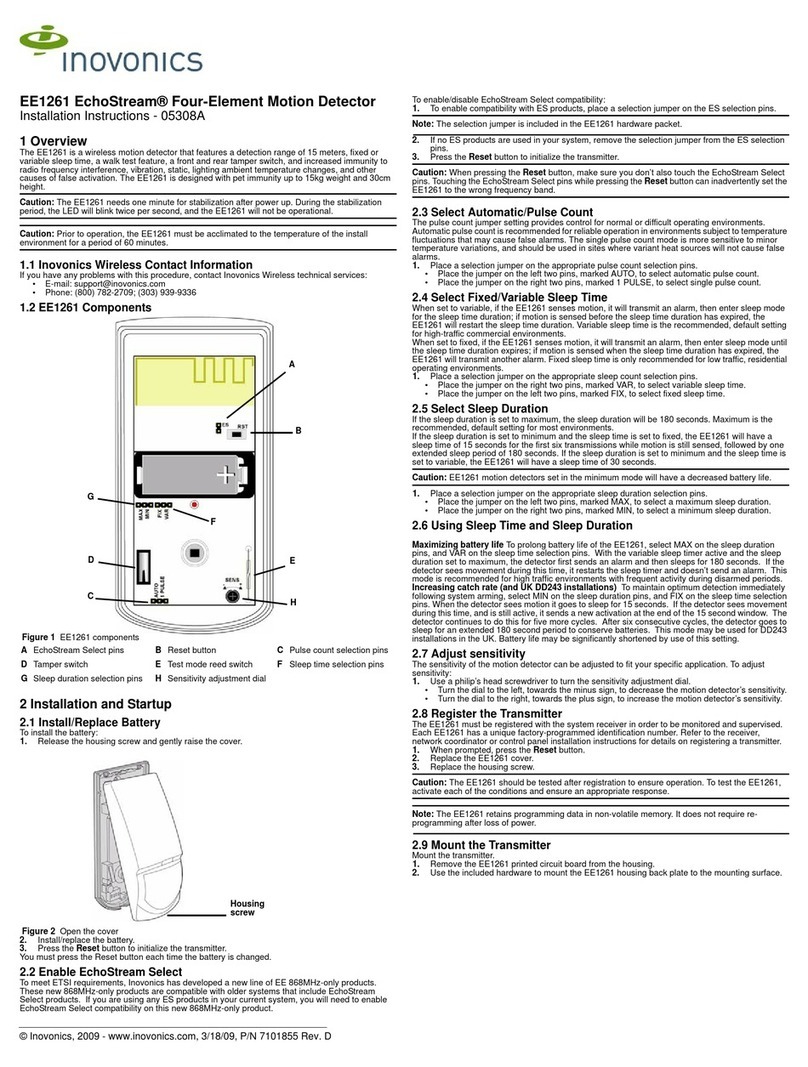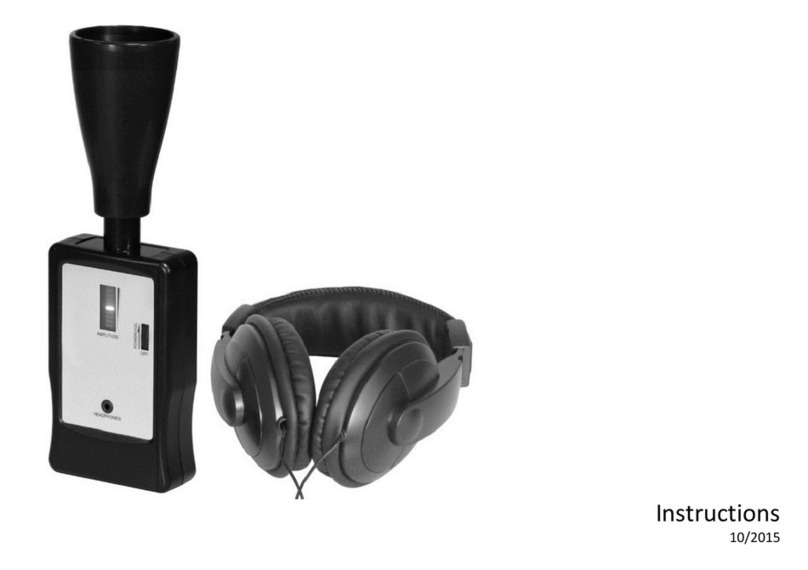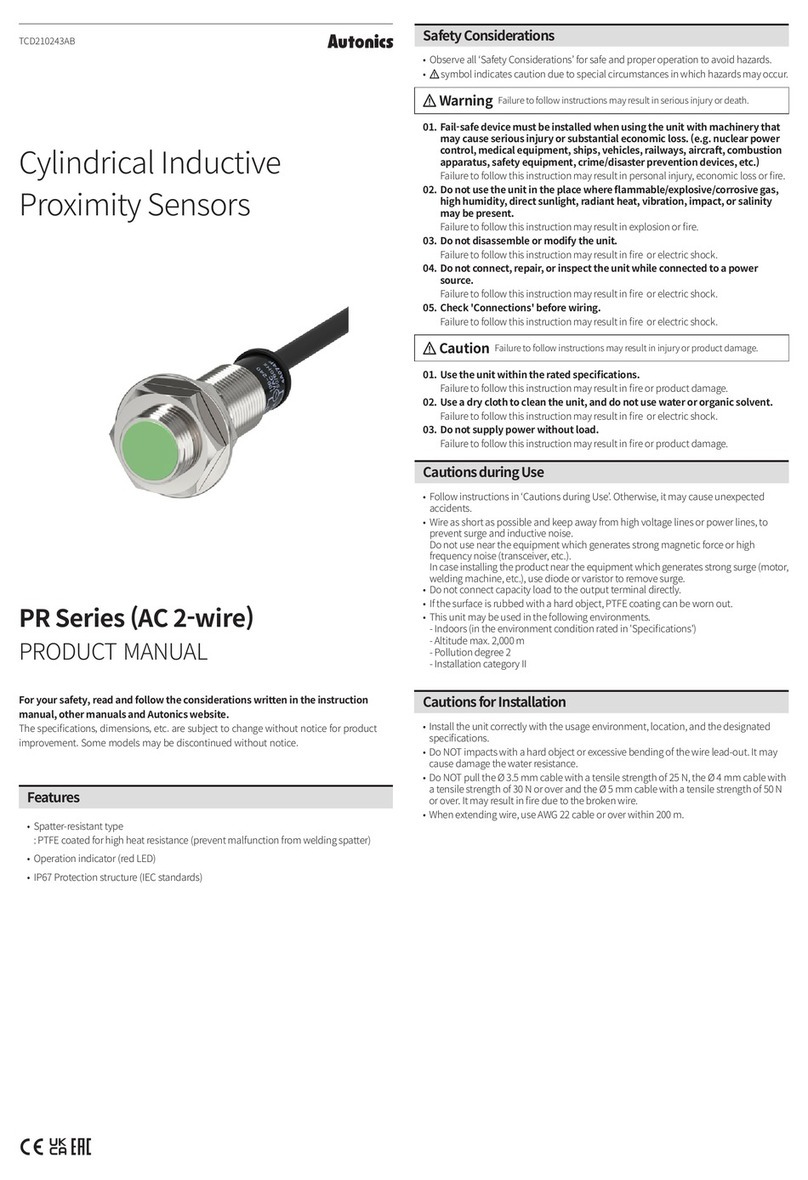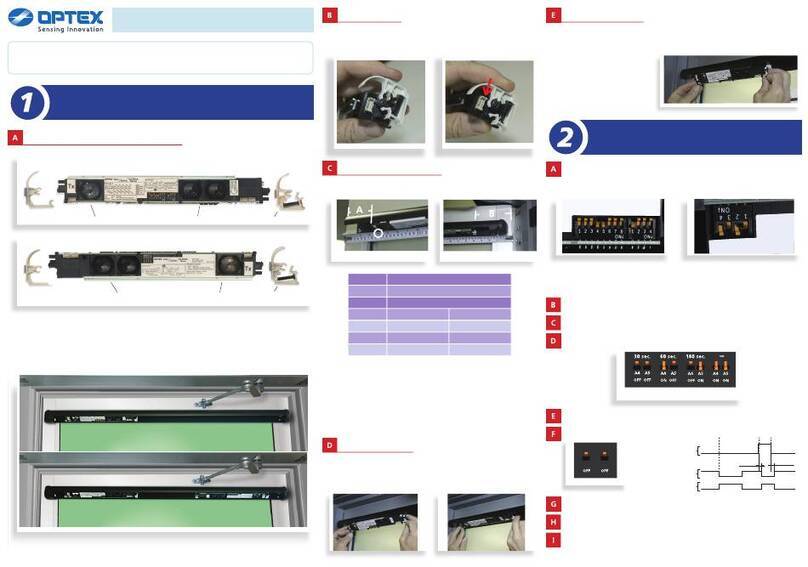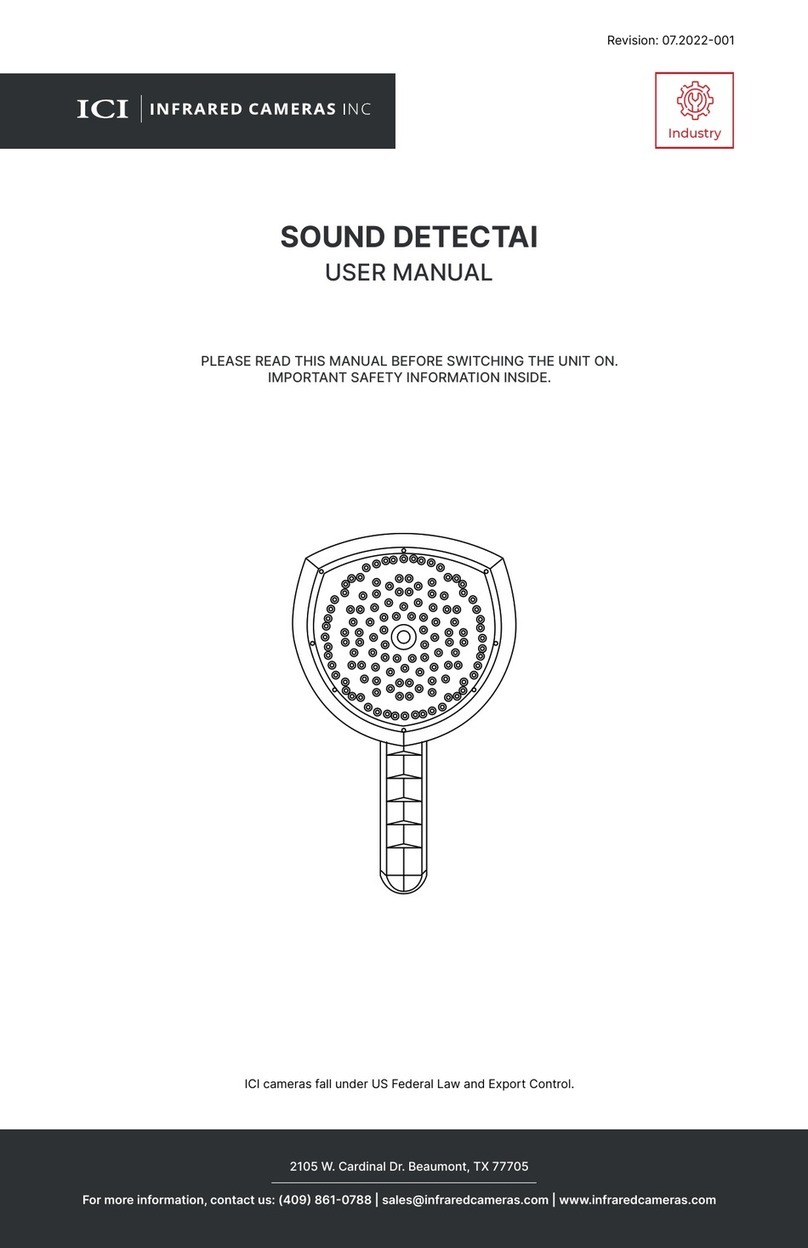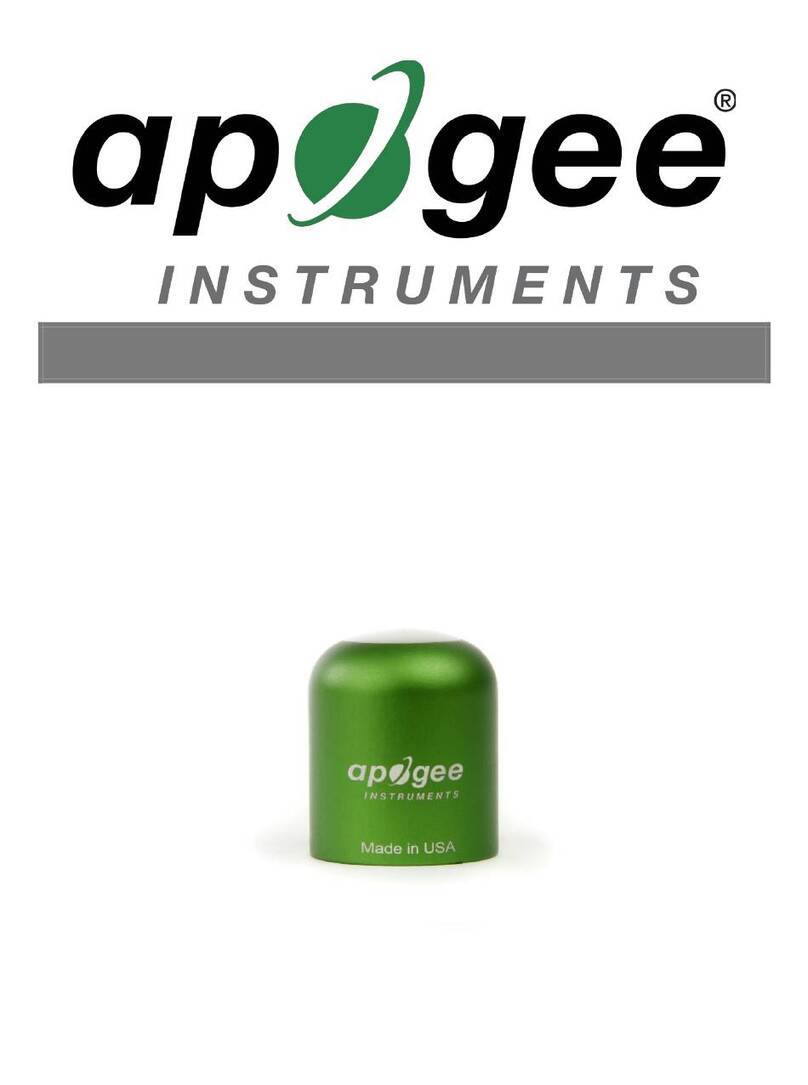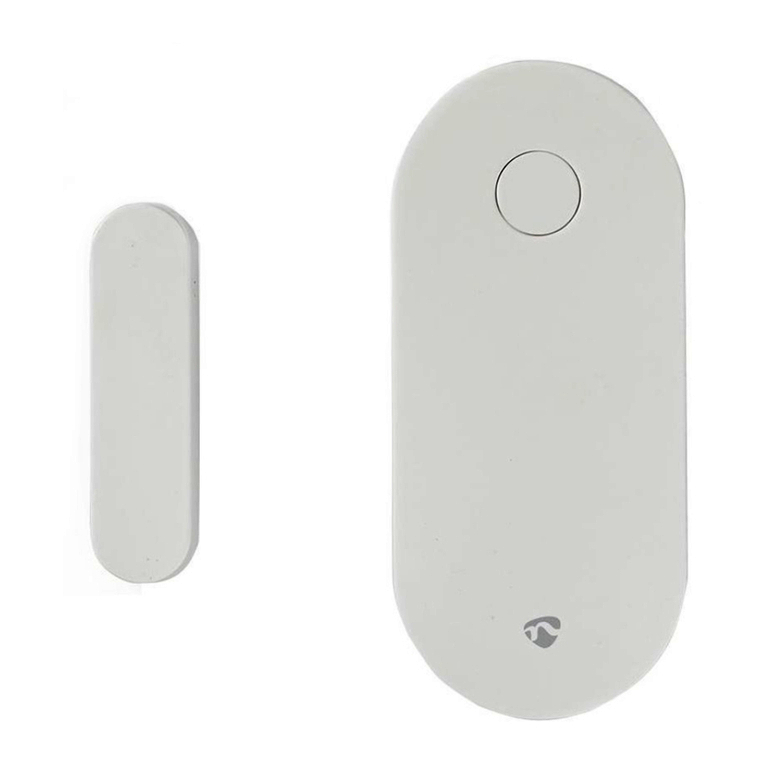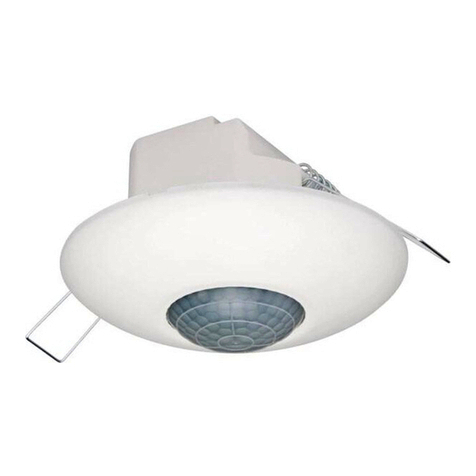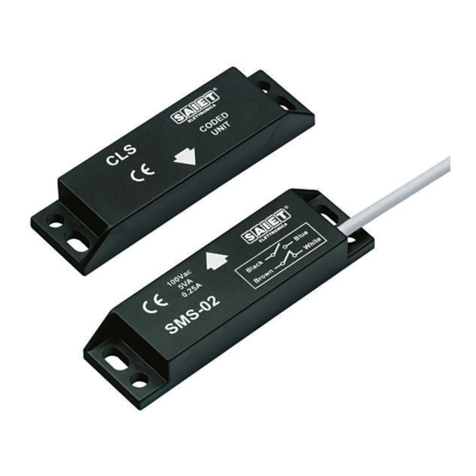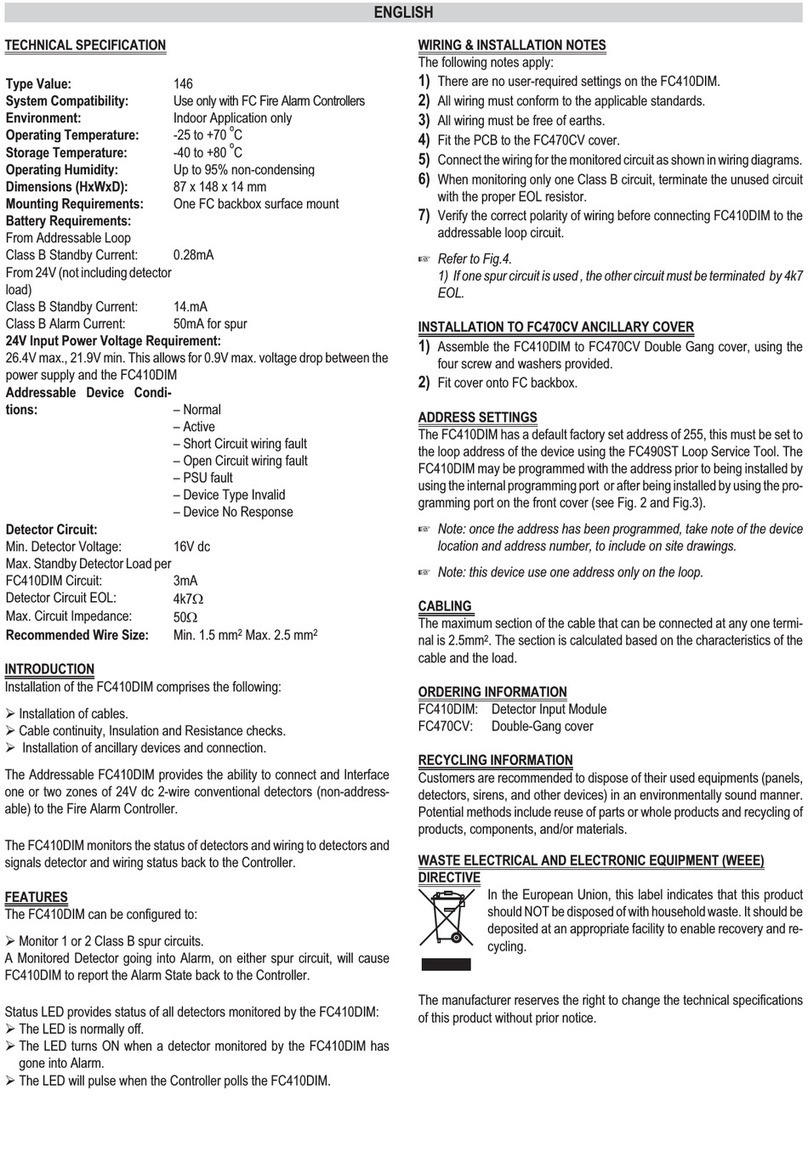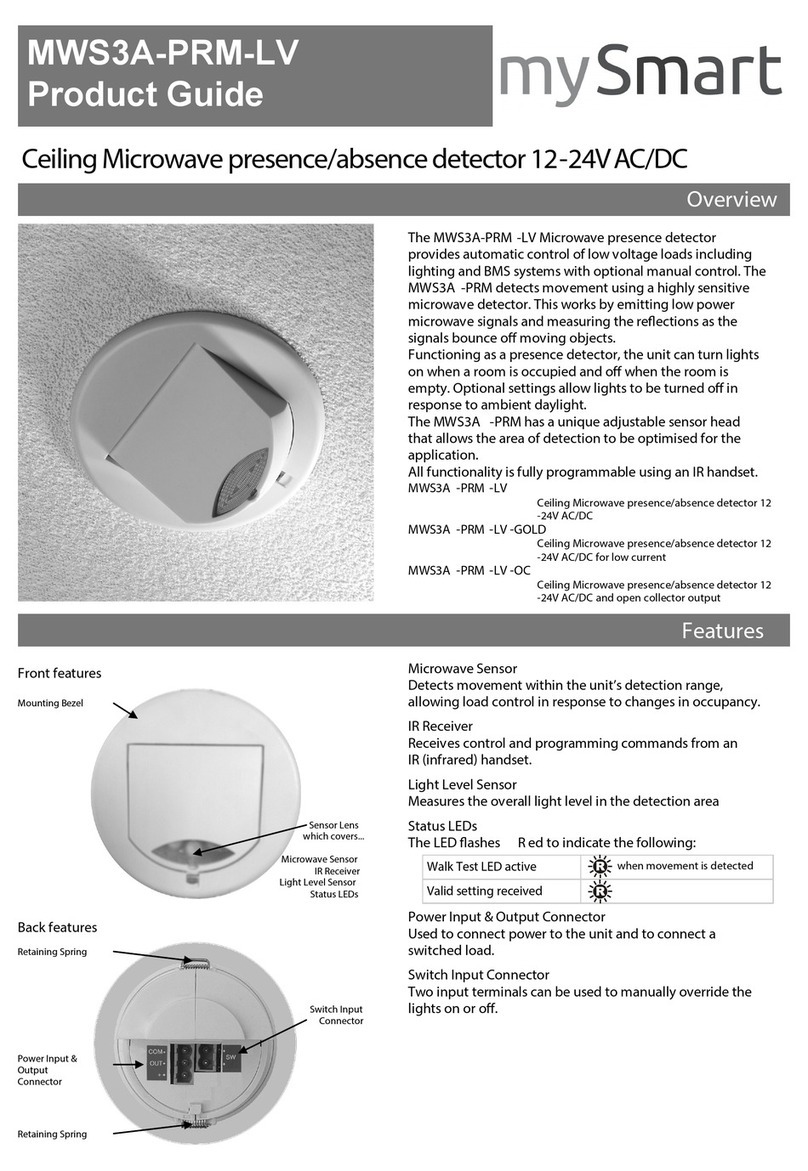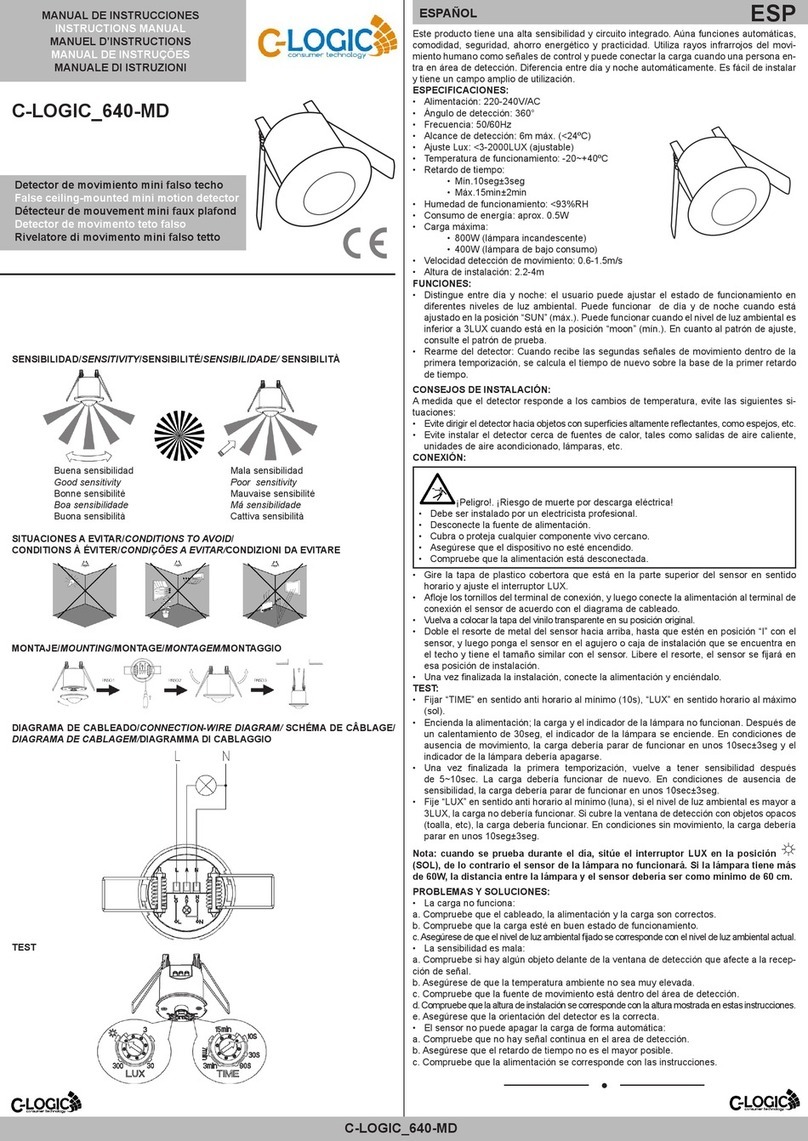C & K Systems Intellisense FG-1025 Series Instruction Manual

FG-1025 Family - Technical Note - 1
Technology Overview
FG-1025 Family
Glassbreak Detectors

2 - FG-1025 Family - Technical Note
Technical Note
FG-1025 Family
Glassbreak Detectors
Overview
This Technical Note is intended to explain in detail the technical advancement of the new FG-
1025 family of glassbreak detectors over the previous FG-730 family of products. Further, it is
intended to highlight the benefits of those enhancements to the customer. This Technical Note is
not confidential, and can therefore be provided to customers who have a technical interest in our
newFG-1025familyofglassbreakdetectors.
Market Demand
The FlexGuard®FG-730 is the world’s best selling acoustic glassbreak detector, with well over
one million detectors installed worldwide. This popularity was achieved due to the detector’s
excellentglass break detectionand false alarm immunity.
However,sincetheintroductionoftheFG-730,themarketforglassbreakdetectorshaschanged.
Themarketnowdemandsdetectors without sensitivity adjustments for ease of installation, detec-
torswhich detect even the mostminimalquiet breaks, and detectorswithoutstanding false alarm
immunity. OurnewFG-1025 family meets these requirements.
Theory of Operation
Usingadualchanneldesign, the FG-730 uses two technologies: listening for the acousticsound
of glass breaking, and sensing the “flex” pressure generated when glass breaks. Signals are com-
pared to set thresholds in the detector, and the detector alarms if the thresholds are crossed. The
significanttechnical breakthrough ofthe FG-730 was sensing the flex, thus the name FlexGuard.
The FG-1025 family is based on the same flex/audio principle of dual technology sensing, but
with far more signal processing using an on-board microcontroller.
FlexGuard Signal Processing Design
C&K is a registered trademark of C&K Components, Inc. FlexGuard and IntelliSense are registered trademarks of IntelliSense Security Systems, Inc..
FG-1025 FG-1025ZFG-1025R

FG-1025 Family - Technical Note - 3
TheFG-730familyof FlexGuard products are all analogdevices. Theyroutethe signal from the
microphonethrough a seriesof discrete (individual) components on the circuit board. The signal
passes through circuitry gates which compare the signal to fixed threshold settings to see if the
amplitude (intensity) of the signal is greater than the threshold. The three threshold settings are:
Flex level threshold: Does the signal exceed a fixed level for the flex?
Audio level threshold: Does the signal exceed a fixed level for the audio?
Time coincidence: Are the two thresholds both crossed within a time window of less than 200 millisec-
onds?
If these three set conditions occur, then the detector alarms.
FG-1025 Signal Processing Design
FG-1025glassbreakprocessingisanorderofmagnitudebeyondtheFlexGuard. Theheartofthe
FG-1025family is a Motorola 68HC05microcontroller. Using four on-boardAto D converters,the
microcontrollerconvertstheanalog signal into a digital datastream. OnlytheFG-1025family uses
anadvanced microcontroller, providing2,112 bytes of ROM, 128bytes of RAM,an internal clock,
and21 lines of input/output allon-board.
The FG-1025 family is more computer than detector. It uses 1,019 lines of assembly language
computercode, each one aseparate instruction for processing thedigitized signal from themicro-
phone. This software program is executed within the central processor unit (CPU). The custom
software is permanently burnedinto the microcontroller’s ROM atthe Motorola factory,virtually
eliminatingthepossibility of memory loss.TheFG-1025familyistheonly glassbreak to usefactory-
installed masked ROM microcontrollers. Other detectors on the market use OTP (EPROM) alter-
ablememory, which can besubject to memoryloss.
TheFG-1025’s digitized signal is comparedagainsteight thresholds:
Flex level threshold: Does the signal exceed a level for the flex?
Audio level threshold: Does the signal exceed a level for the audio?
Time coincidence: Are the two thresholds both crossed within the time window?
Flex/audio ratio: Is the ratio consistent with glass breaking?
Attack threshold: Does the signal match an attack profile?
Flex duration: Does the duration match a glass break profile?
Audio duration: Does the duration match a glass break profile?
Microphone overload: Does the signal represent a true glass break attack instead of microphone
overload?
If these eight conditions occur, then the detector alarms.
FG-1025
FG-1025R

4 - FG-1025 Family - Technical Note
Detector Intelligence Through Digital Signal Processing
The FG-730 is a “dumb” detector in that the signal is compared against three fixed thresholds.
The thresholds remain the same regardless of conditions because the thresholds are built out of
discrete components on the circuit board.
The FG-1025 family of glassbreaks are “intelligent” detectors. The software uses proprietary
mathematicalformulas(algorithms) to process the signal and toadjustthresholdsbasedoncurrent
conditions. Falsealarmrejection algorithms identify and reject whole classesoffalsealarmsounds.
Glassbreakdetection algorithms identify trueglass break conditions for all glass typesand attack
profiles. Thresholds are adjusted up and down as warranted by data received at the detector. In
sum, the FG-1025 family's reliability is the best on the market because it performs 20 times more
processing in the critical first 200 milliseconds of an event than that performed by the FG-730.
Patentshave been filed onthe FG-1025 family and its digital signalprocessing.
COMPARISON CHART
FG-730/930 FG-1025/1025R FG-1025Z
flex level flex level flex level
audio level audio level audio level
timing coincidence timing coincidence timing coincidence
flex audio ratio flex audio ratio
attack threshold attack threshold
flex duration flex duration
audio duration audio duration
microphone overload microphone overload
time-of-arrival
The Latest Glassbreak Innovation - FG-1025Z
ThenewestmemberoftheFG-1025familyofglassbreakdetectorsistheFG-1025Z. Thisisthefirst
glassbreakdetector that only listensforsoundscomingfrom the glass. The FG-1025Zusespatented
Time-of-Arrival(TOA) processing which is agiantleap forward in glassbreakdetection and false
alarm immunity for our industry. Using two microphones and TOA processing, the detector
listens only for the sound of breaking glass arriving from the glass zone (front microphone), and
ignoressounds arriving from elsewhereintheroom—theexcluded zone (back microphone). Other
glassbreakdetectorsarespaceprotection devices because they process sounds from the roominte-
rior,as well as sounds from the perimeter glass.
FG-1025Z

FG-1025 Family - Technical Note - 5
What Is Time Of Arrival (TOA)?
Time-Of-Arrival(TOA)isamethodofprocessingsoundtodistinguishbetweentrueglassbreak
attacks and false alarm sounds. Sounds are received by two microphones, 180o opposed, and
processeddifferently depending onwhich microphone received the sound first. Sounds arriving
firstfrom the glass zone (frontmicrophone),are processed to determineifa true glass break attack
occurred. Sounds arriving first from the excluded zone (back microphone), are ignored as false
alarm sounds. This innovative technology dramatically increases accuracy, reliability and false
alarmimmunity.
Additional FG-1025Z Enhanced Features
TheFG-1025Z incorporates three additional enhancements: Remote LEDEnable, Trouble Out-
put, and Command Input. Focused on meeting worldwide compliance standards, the Remote
LED Enable feature allows remote operation of the LEDs. The Trouble Output allows remote
annunciations of any trouble conditions the detector may have. The Command Input feature
allowslocal and remote activation ofthedetector's self-test.
Solutions To Microphone Overload
Extremely loud glass break events, such as abullet blowing out ahuge window, can overloada
glassbreak detector microphone causing a detector to false alarm or causing a detector to miss a
detection, depending on the circumstances. The FG-930 was the world’s first detector to solve
microphoneoverload. Ina now patented process, asecondmicrophone with a mechanical filter is
able to filter out the overload, allowing the detector to respond normally to the glass break event,
andtoreject loud burst falsealarms. TheFG-730doesnothavethis feature, so itsdesigntreatsthese
loudburst events as glass breakeventsin order to maximizedetection.
Aneven more ingenious solution isincorporated into the FG-1025 family. Adigitalfilter inside
themicrocontroller catches and convertsoverload signals to normal signals,virtually eliminating
burstrelatedfalse alarms and significantlyimprovingcatchperformanceofpreviously“impossible
todetect”glassbreakevents.

6 - FG-1025 Family - Technical Note
Verification Of Proper Operation
The yellow flex LED on the FG-730 detectors will flash if a wall is struck. This provides some
comfort to the end-user by providing visual feedback that the detector is still powered. Unfortu-
nately, this test must be initiated by the end-user, and it is not an indication of the detector’s
operationalstatus, only that the LED still works.
TheFG-1025 family uses the microcontroller to conduct a continuousself-test of the detector. It
checks the ROM memory, RAM memory, controller logic, controller arithmetic, and the analog
circuitry surrounding the microcontroller. In the unlikely event of damage or failure, the LEDs
will begin to blink alternately in rapid succession to attract the attention of the end-user.
Theend-usercanalsoperiodically test the detector’spower with a simple clap of the hands. The
green LED blinks, exercising the circuitry and providing the end-user with visual confirmation.
Thissimpletestcanbe of great comfort to the end-user who wonderswhetherthedetectorisactive,
since real glass break events are infrequent, and since breaking real windows as a test is rarely
practical.
CONTINUOUS SELF-TESTS OF:
4ROM memory
4RAM memory
4controller logic
4controller arithmetic
4analog circuitry surrounding the microcontroller
Activation Of Test Mode
Atinstallation,therangeoftheFG-730canbeeasilytestedusingtheFG-700ortheFG-701hand-
heldglassbreaksimulator. Followingaflexsignalinitiated by the installer, the FG-700ortheFG-701
produces an audio signal realistic enough that in combination with the flex it trips the detector
into alarm. This essentially is a false alarm which trips the detector.
Thefalsealarmrejection algorithms in the FG-1025 familyofdetectorsare too good to be fooled
bytheFG-700 or the FG-701 simulator. The detectors do not trip tothisfalsealarm. Thesedetectors
mustobviously still berange-tested, so a test mode is used. In test mode, thefalse alarm rejection
algorithmsare bypassed, while leavingthe glass break detection algorithms in place. In this way,
testmodeprovides a valid test ofdetectorrange.
FG-701
Glassbreak
Simulator

FG-1025 Family - Technical Note - 7
Using Hand-held Testers To Confirm Detector Range
The old FG-700 tester can be used on the new FG-1025 family of glassbreak detectors. The
installer opens the detector, shorts across the two pads with a screwdriver, and the detector goes
into test mode for 10 minutes, after which it automatically reverts to normal mode. Once in test
mode,theinstaller tests the detector's rangeusingthe FG-700 GlassbreakSimulator.
Aneasiermethod is to use theneworange colored FG-701tester. Ratherthan climbing aladder,
theinstaller puts any of theFG-1025family into test modebyfiring the tester at thedetector from a
distanceofupto10 feet(3 meters)away. Thedetector canthenbetestedforrange. After10minutes
thedetectorautomaticallyreverts to normal mode. Also, thedetectorcanbe taken out of test mode
byfiring the tester at the detector.
TheactivationsoundwhichplacestheFG-1025intotestmodeisasequenceofsevenshortclicks.
The time interval between each click is unique, and the detector listens for this unique pattern.
Onefearis that the detector might go intotestmodeonitsownduetohearing a sound similar to the
testmodeactivation sound. The consequence would bethatfalse alarm immunity for the detector
would be reduced for 10 minutes. Fortunately, this is very unlikely to occur due to the unique
timingsequence between the seven clicks. Calculatingforevenworst-casenoiseconditions,theoddsof
asoundcausingafalseactivationintotestmodeisoneintwobillion.
Improved Ease Of Installation
With over one million FG-730 detectors installed worldwide, we have received many sugges-
tions on how to make a glassbreak detector easier to install. The FG-1025 family reflects these
suggestions:
No sensitivity adjustment, the detector is lick and stick
A large, centered wiring hole for easy threading of wires
Huge wiring space and 45 degree gate type terminal blocks for quick hookup
Dip switches to eliminate the frustration of lost jumpers
Inside plastic cover protects the electronics from accidental damage
Terminal block positions and room for wiring EOL resistors
A hinged cover which snaps off for easier access if needed
25 foot (7.6 m) range without adjustment covers almost any room
No restriction on how close the detector can be mounted to the glass
No restriction on where the detector can be mounted in the room
Hidden LEDs for a beautiful appearance

8 - FG-1025 Family - Technical Note
Benefits Of The FG-1025 Family Of Glassbreak Detectors
1. The microcontrollers false alarm rejection algorithms eliminate most known false alarm sources.
Compared to the FG-730, which has excellent false alarm immunity, false alarm sources are reduced by
two-thirds. Comprehensive tests show that the FG-1025 family has the best false alarm immunity on the
market.
2. The microcontrollers algorithms provide superior detection of breaking glass, including very
challenging breaks such as quiet breaks. Compared to the FG-730, which has excellent glass break
detection, the FG-1025's detection of very challenging breaks is increased an additional 50%. Again,
comprehensive tests show that the FG-1025 family has the best detection on the market.
3. The hand clap feature provides the end-user with peace of mind. The end-user can instantly check a
magnetic contact by opening a door, or a motion detector by walking across the room, but no one wants to
break a window to test the glassbreak detector. A simple hand clap will tell the end-user if the detector is
active. Although the clap test is only a limited test, it does verify the detector is powered, the microphone
is operational, and the microcontrollerthe heart of the detectoris functioning and executing its
program. If there was a problem, the LEDs would flash repeatedly indicating the microcontrollers
continuous self-test had found a problem.
4. Hiding the LEDs behind the cover provides for a more attractive appearance, and for about 10% of the
installations, attractive products are what sells the end-user.
5. The new FG-1025Z only listens for sounds coming from the glass. Using two microphones and
Time-Of-Arrival processing, the detector listens only for the sound of breaking glass arriving from the glass
zone, and ignores sounds arriving from elsewhere in the room (excluded zone).
6. FG-1025 family detectors are a safer installation for the installer and the customer. The installer will not
always know the exact type and thickness of the glass to be protected. FG-1025 family detectors have the
industry's widest specification for glass types and thicknesses, increasing the likelihood that the detector
will perform as expected regardless of the glass installed in the room.
Plate glass Tempered glass
Wired glass Sealed insulating
glass
Laminated &
coated glass
Widest specification for
glass types and thick-
nesses
© 1995 C&K Systems, Inc. 5-052-401-00 Rev A
This manual suits for next models
3
Table of contents
Other C & K Systems Security Sensor manuals
